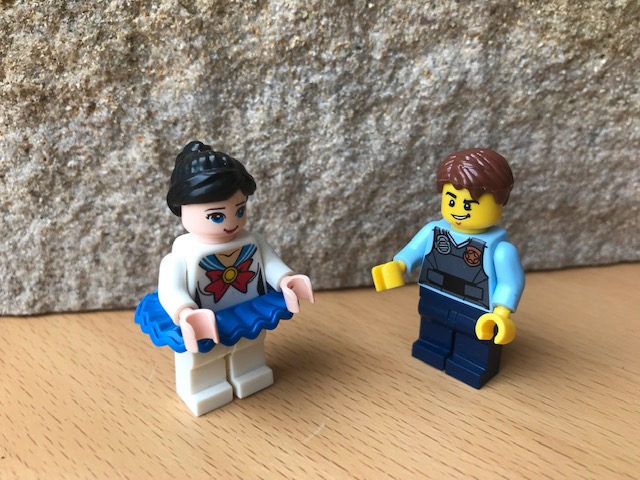Let’s talk straight away – addressing conflicts successfully

It is not uncommon for disagreements that arise in the team not to be addressed directly. Especially not if they feel they are just small things. What needs to be learned for addressing conflicts constructively?
Read more in this article. Often one does not perceive emerging conflicts so quickly. Disharmonies usually sneak into a team undramatically. Distracted from everyday business and stress, one is not particularly attentive and sensitive with communication and does not register when the tone becomes harder and cooperation more difficult.
Now it can be of course that a disgruntlement is only a temporary tension, perhaps caused by a stress situation and it disappears again. Unfortunately, it is often the case that one resigns oneself to this and the relationship to the colleague gradually deteriorates.
The best thing about emerging conflicts is to address them directly and, if possible, get them out of the way as long as they have not solidified.
The longer you wait, the more conflicts brew up and the greater the inhibition threshold to say things openly.
How do conflicts evolve?
In his escalation model on conflicts, Fritz Glasl wonderfully described how conflicts arise on a small scale, how they can grow and at which points they can be resolved and how. If you would like to read more about the model, you are welcome to do so in my article: “Understanding Conflicts and Finding Solutions“.
In my opinion, Glasl has particularly well described the level of escalation up to which the participants themselves are still able to address the conflict in a conversation and jointly find solutions and when this is no longer possible for two.
In his model, he distinguishes a total of nine escalation stages. While in the first three of the nine stages it is still possible for the conflict parties to find a solution in a discussion, one usually needs outside support afterwards.
If the conflicts then escalate further, one notices that others also become aware of the conflict or are even drawn into it.
Now, as a rule, a moderating person is needed to help resolve the conflict. At this stage, “a lot of porcelain has already been broken”, i.e., mortifications have happened that cannot be resolved by a four-eye-talk.
In order to prevent a conflict from escalating and causing permanent damage, I recommend going into a clarifying conversation as soon as possible
What are the effects of emotions in conflicts?
A noticeable effect of conflicts is that the emotions associated with them “cloud” my senses. Since conflicts are inevitably associated with negative emotions and these bind my energy, there are various negative effects that lead to conflicts:
- My perception of the situation is increasingly distorted. Heard, seen and felt things become very subjective.
- I’m increasingly projecting all the bad onto my conflict opponent. The other is more and more to blame for everything.
- The contentious issues will be broadened. Simply everything the other does is bad now.
- I’m losing my empathy. The more the conflict escalates, the less I perceive the other’s perspective and motives.
- My hurt feelings are more and more perceived by me and overlap factual information.
How can I clarify my situation for myself before I look for a conversation with the other one?
One reason for avoiding addressing conflicts is often that you don’t know how to address them. Perhaps it is difficult to put one’s own discomfort into words and thus fears not to have anything concrete to say in the conversation.
For the preparation of the discussion one can purely shift oneself consciously into the different points of view.
First, I consider my position:
- How do I see the conflict? What disturbs me, irritates me?
- How do I feel?
- Why does that bother me? What effects does it have?
- What would I like differently?
And now it can be helpful to consider the same questions from the perspective of the other. How do they see the conflict? What disturbs or irritates them? etc.
Afterwards I check my point of view again. Do I still see the conflict in the same way or has something changed? In which areas do I need to know more? What things should I consciously address and ask in the conversation?
What is the best way to address a conflict?
It is important not to take the other person by surprise with a discussion “out of the blue”. It is better if I first give my conversation partner a brief feedback that there is a situation for me to clarify and ask them if they are ready for it. With their agreement we plan enough time and look for an undisturbed place for our conversation.
It might also be a good idea, if it is suitable for both of us, to have this conversation during a walk. The different environment promotes concentration and brings me and my counterpart mentally and physically out of the other everyday topics.
How do I best communicate my request to my counterpart?
Since the participants in conflicts are usually particularly sensitive, it helps to adhere to basic rules of communication during a conflict discussion or to avoid the following “communication errors” urgently.
Typical mistakes in conflict discussions are:
- Critical feedback usually escalates when we make generalized negative statements about each other, such as “You’re pretty dominant.” Or “You only think about yourself. ‘You’ messages act like an outstretched index finger that blames the other for the conflict. The other is reproached and insinuated.
‘You’ messages act like an outstretched index finger that blames the other for the conflict. The other is reproached and insinuated.Especially frequent are:- Evaluate – “That’s not right, you did it wrong!“
- Teaching – “You should have listened to that!“
- Command – “You just have to think more along!“
- Irony/ Sarcasm: “It’s great that my idea doesn’t count again!” or “You really are from the very fast troupe.”
These statements complicate the situation because they offer little surface to attack and always leave the back door open, you didn’t mean it that way. - Question the other one and drive them into a corner: Why, why, why? With the “interrogation method” one projects everything concerning the conflict onto the conflict partner and keeps one’s share out.
What all these methods have in common is that they are basically variations of the “you” message, in that they focus on the other person, while I myself remain in cover with my feelings and perceptions.
Tips for appreciative communication in conflict resolution:
- The key to constructively addressing conflicts lies in describing one’s own point of view rather than evaluating the other one. This means to formulate my concern in ‘I’ messages instead of ‘you’ messages, e.g. instead of: “You see that wrong” – “I see that differently” or instead of “You misrepresented that” – “I understood that differently”.
- Feelings are very important in any conflict. They are the engine that keeps the conflict going and at the same time the signal when the conflict is over for me. Therefore, the expression of feelings and needs belongs to every conflict clarification. The feelings are expressed in a non-verbal way in conflicts anyway.
- If the other describes their point of view it is important to listen actively. This means actively trying to understand what my counterpart is saying. This happens, for example, through an empathetic sensitivity to their point of view, summarizing what has been heard and clarifying questions of understanding.
How can a conflict resolution discussion be structured?
There are various possibilities for a common structure for the conversation and I would like to introduce two here:
- PIA-structure – ‘PIA’ stands for ‘perception’, ‘impact’ and ‘aspiration’.
In the first step I describe my view of the conflict. What did I actually perceive? What happened? What is the conflict situation like in my perception?
Then I describe to what extent this behavior affects me, us, the common situation, which is why I find the behavior problematic.
Thirdly, I formulate my aspiration, what I would like to have different in the future, what I need now in the situation to get out of the conflict.
If the conflict has not progressed so far, you can have one party formulate these three steps first and then the other. Then they go into the exchange.
The more complex the content of the conflict is, the more you can go from step to step and then search for possible solutions together.
- The 3DAD-structure – It offers a similar structure as the PIA one, but explicitly names the expression of feelings as a separate step and incorporates the other person’s point of view.
Describe your point of view: “I’ve noticed that…”, “I’ve been watching you lately…”
Describe effects: “For me, that means…”, ” Thereby it often happens…”
Denote feelings: “It makes me feel…”
Ask how the other person sees the situation: “How do you see it?”
Draw conclusions: “How can we deal with this in the future?” “What can we do differently?”
These two structures can serve as a discussion guide and at the same time as a preparation structure for a conflict discussion. In my experience, it helps in emotional conflict discussions, which are usually accompanied by a great deal of inner insecurity, if both dialogue partners proceed with a common structure as orientation.
Bottom-line:
Conflicts usually do not resolve on their own. If relationships in teams are burdened by conflicts, performance, motivation and fun at work are automatically reduced. So that conflicts do not solidify and can be cleared without losses they should be addressed as early as possible.
Click here, if you want our Metakomm experts to help you with the team conflicts.



